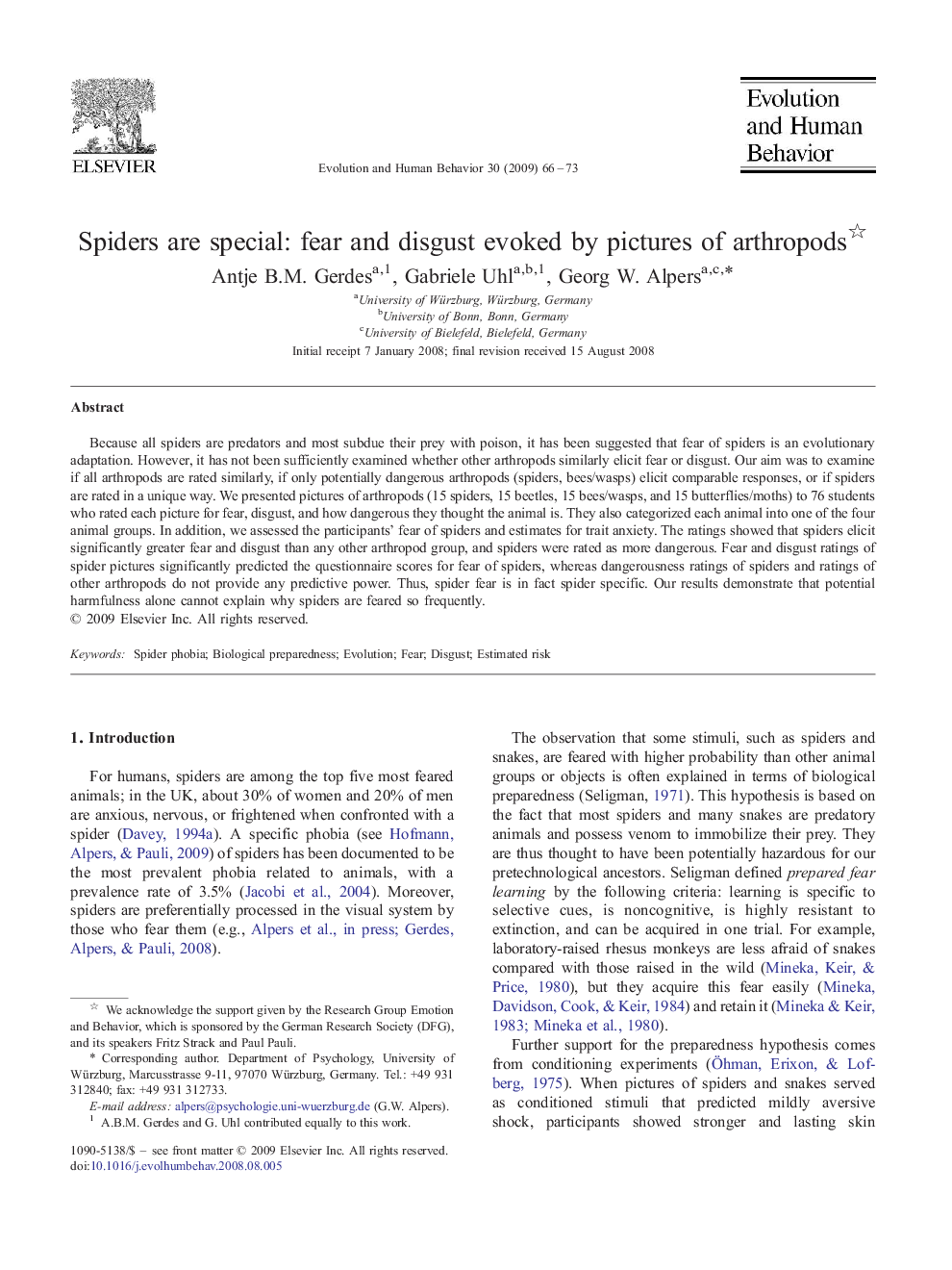| Article ID | Journal | Published Year | Pages | File Type |
|---|---|---|---|---|
| 943539 | Evolution and Human Behavior | 2009 | 8 Pages |
Because all spiders are predators and most subdue their prey with poison, it has been suggested that fear of spiders is an evolutionary adaptation. However, it has not been sufficiently examined whether other arthropods similarly elicit fear or disgust. Our aim was to examine if all arthropods are rated similarly, if only potentially dangerous arthropods (spiders, bees/wasps) elicit comparable responses, or if spiders are rated in a unique way. We presented pictures of arthropods (15 spiders, 15 beetles, 15 bees/wasps, and 15 butterflies/moths) to 76 students who rated each picture for fear, disgust, and how dangerous they thought the animal is. They also categorized each animal into one of the four animal groups. In addition, we assessed the participants' fear of spiders and estimates for trait anxiety. The ratings showed that spiders elicit significantly greater fear and disgust than any other arthropod group, and spiders were rated as more dangerous. Fear and disgust ratings of spider pictures significantly predicted the questionnaire scores for fear of spiders, whereas dangerousness ratings of spiders and ratings of other arthropods do not provide any predictive power. Thus, spider fear is in fact spider specific. Our results demonstrate that potential harmfulness alone cannot explain why spiders are feared so frequently.
